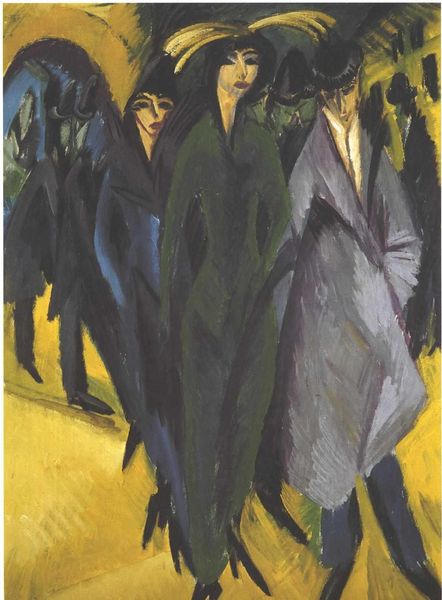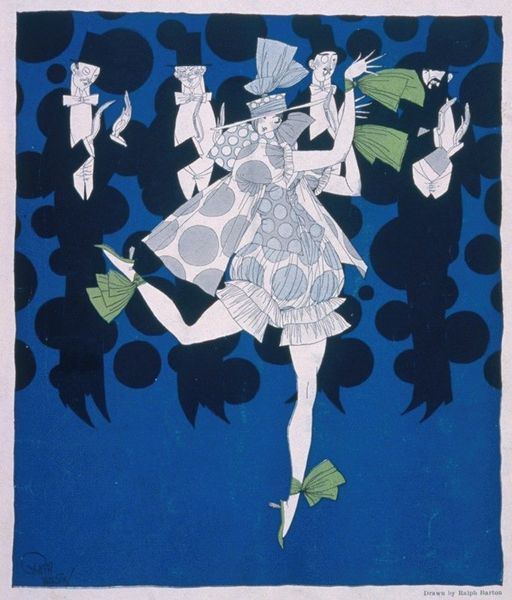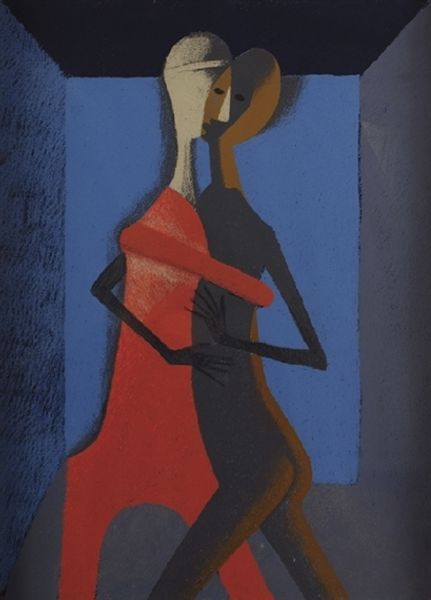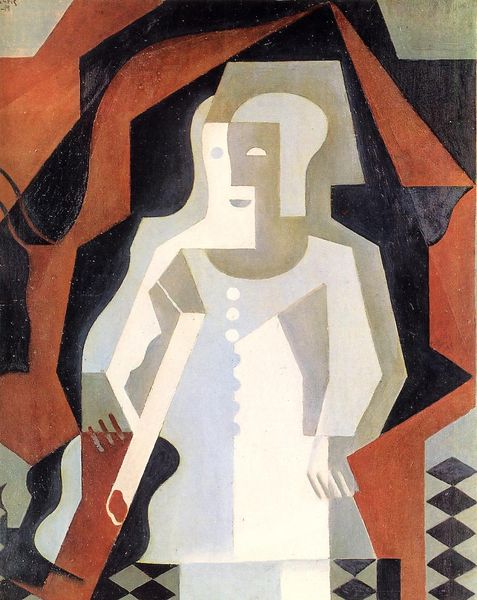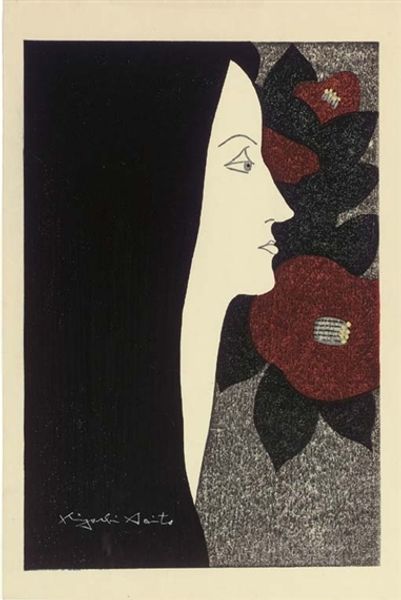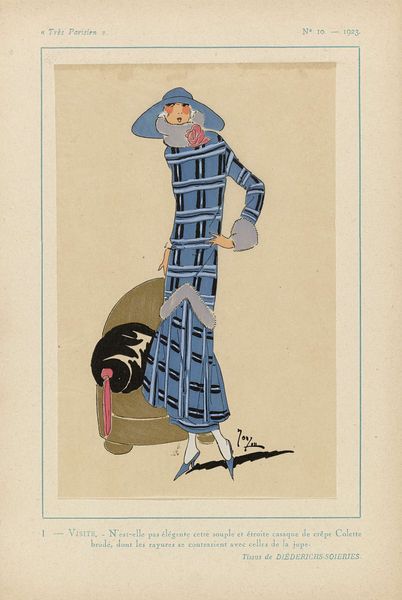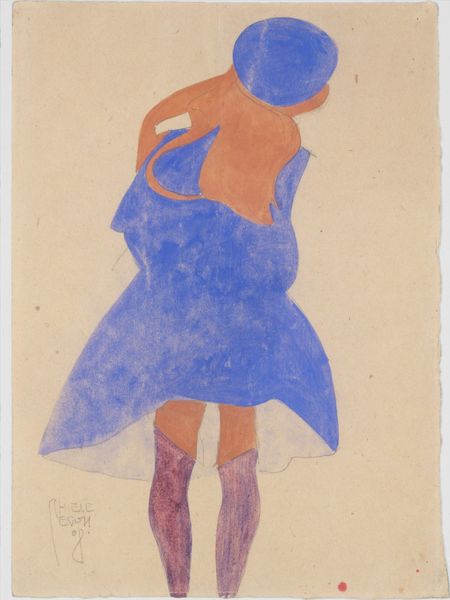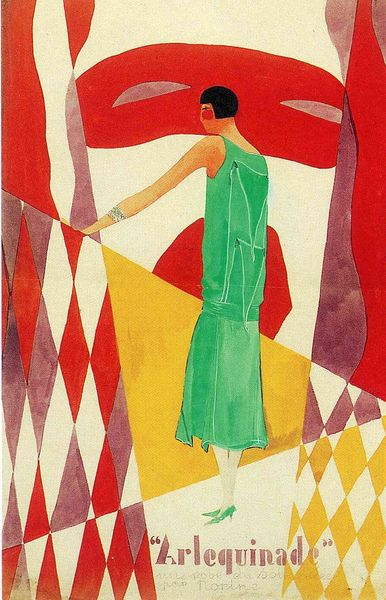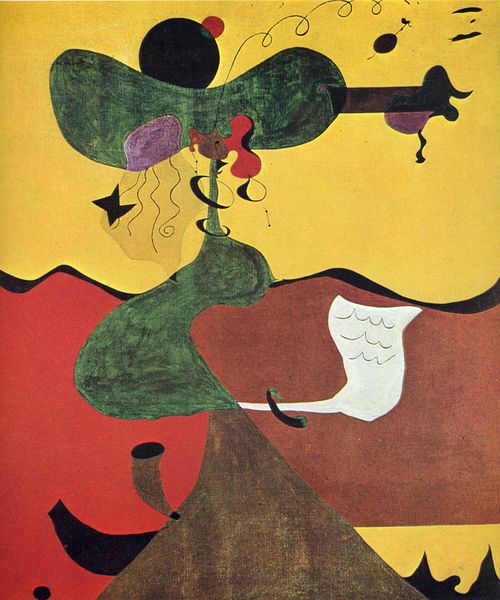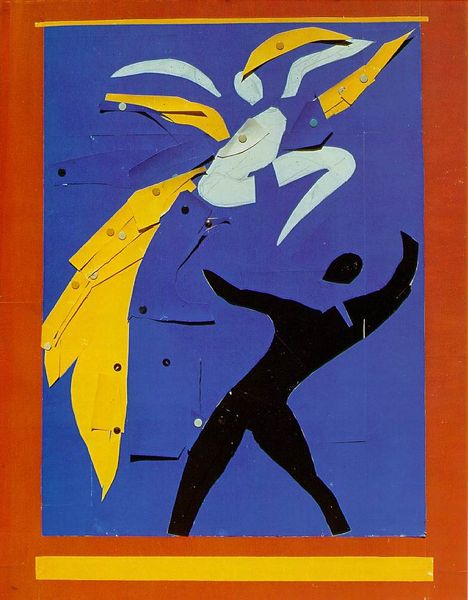
Dimensions: 68 x 51 cm
Copyright: Public domain US
Curator: There's a quiet, almost mystical feeling emanating from Martiros Sarian’s "Walking Woman." Painted in 1911 using tempera, the image features a woman amidst simplified foliage. It immediately strikes me with its stark contrasts. Editor: Indeed, there’s a powerful sense of stillness despite the implied motion. The limited palette – those intense blues and reds against the muted yellows – imbues the image with an almost dreamlike quality. The simplification of form speaks to early modernism, yet there is something older at play here. Curator: The reduction of details places a spotlight on shape and color. For audiences in 1911, who were witnessing increasingly rapid industrialization and urbanization, this art offered an imagined Orient. We see it in Sarian's contemporaries, from Matisse to Kandinsky, who similarly extracted from these contexts to express modernity's complex feelings. Editor: And consider what that simplified form communicates beyond pure aesthetic consideration. The hat, the cloak… these are almost glyphs rather than portraits. These potent visual shortcuts access deep, often unconscious, associations connected to the image of a working woman in a foreign space, a symbolic journey rather than an actual one. The colors are bold, almost Fauvist, yet grounded in this older symbolic function. The color palette echoes not just the visible but the felt. Curator: This work appeared during a critical period when Russian artists, including Armenian artists like Sarian, started exploring the cross-cultural discourse between the East and the West. Sarian’s journeys to locations like Egypt and Turkey clearly informed his visual vocabulary. His contributions allowed the Armenian experience and aesthetics to infiltrate a broader discussion about Modernism and national identity, complicating how it was viewed and who could be involved. Editor: The overall effect borders on iconic. Look at the stark geometry of the plant leaves. Even though Sarian was considered part of the avant-garde, a vital, timeless energy vibrates through this piece. I wonder if the simplification isn't a move to emphasize specific characteristics or even an attempt to distill cultural essence, almost creating an archetype of movement through a cultural terrain. Curator: What you see is not just an individual figure, but rather how modernism reinterpreted and presented different cultural identities within the global framework, which continues to ignite our conversations today. Editor: Ultimately, “Walking Woman” transcends simple representation and provides us, even today, with visual seeds—resonances that are cross-cultural.
Comments
No comments
Be the first to comment and join the conversation on the ultimate creative platform.


